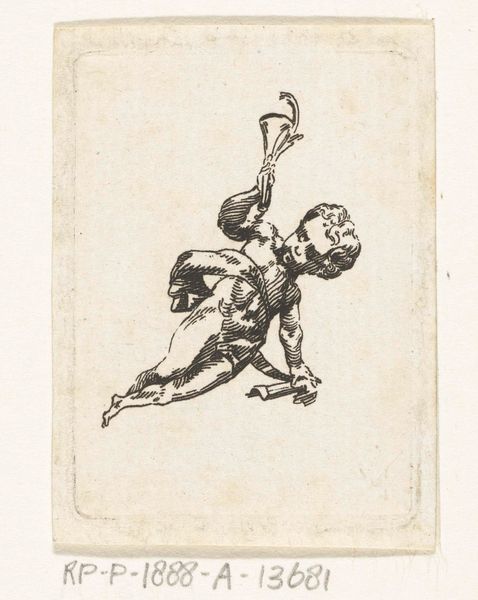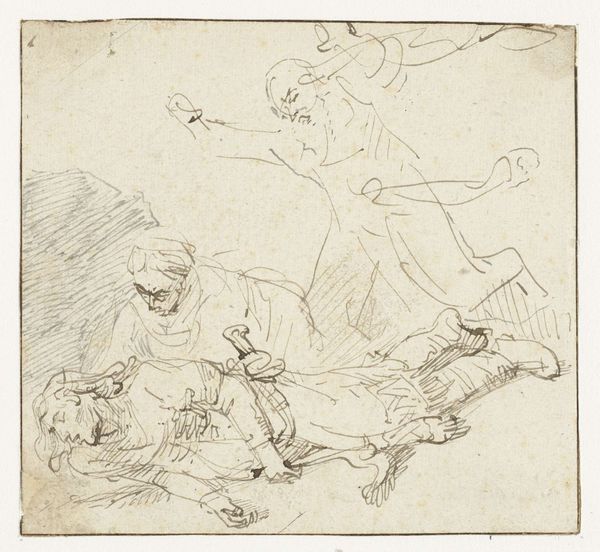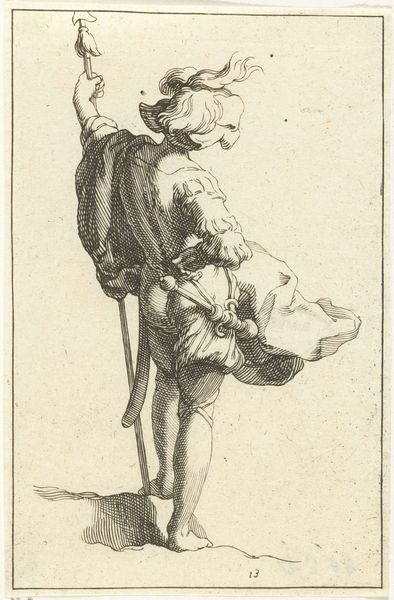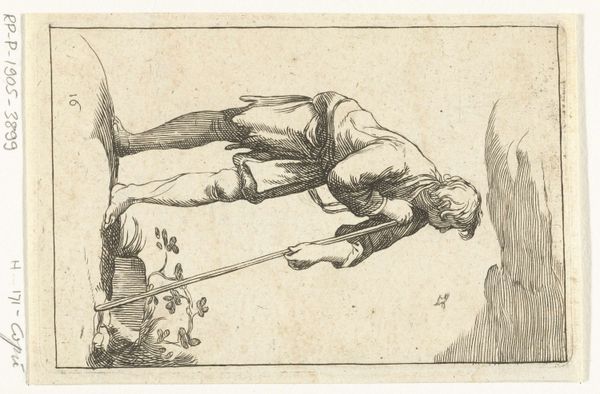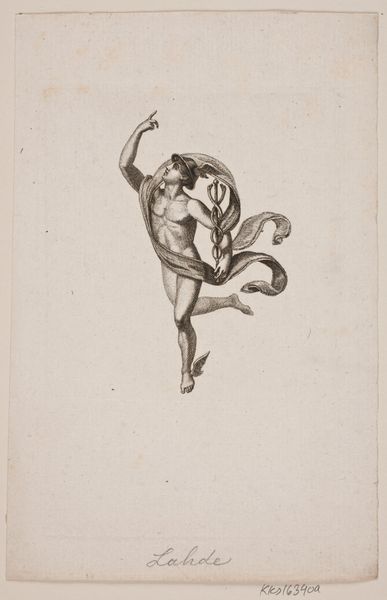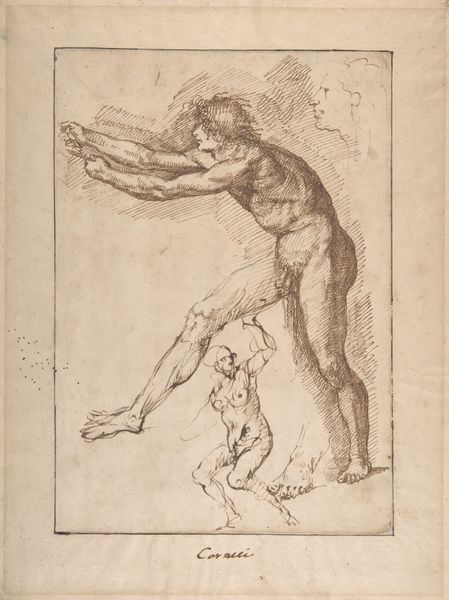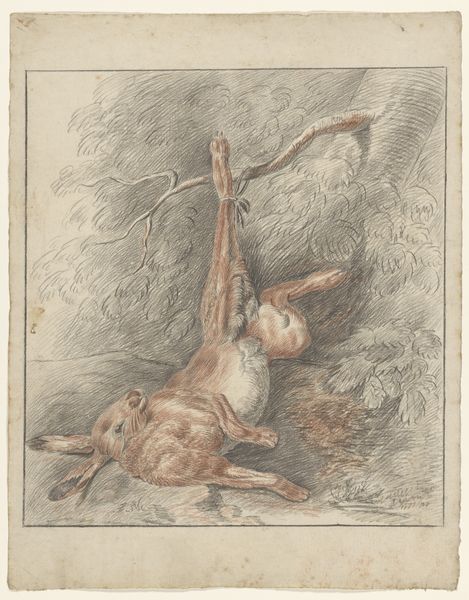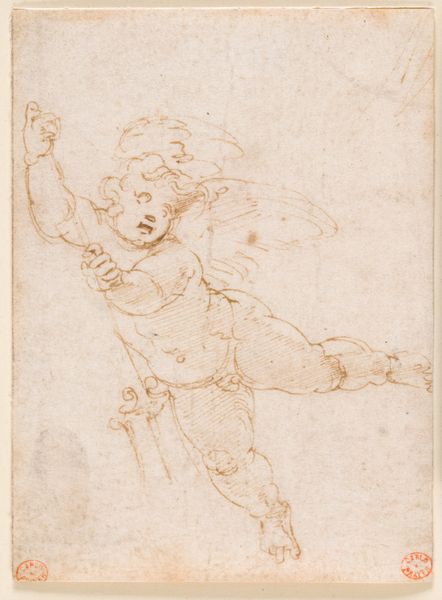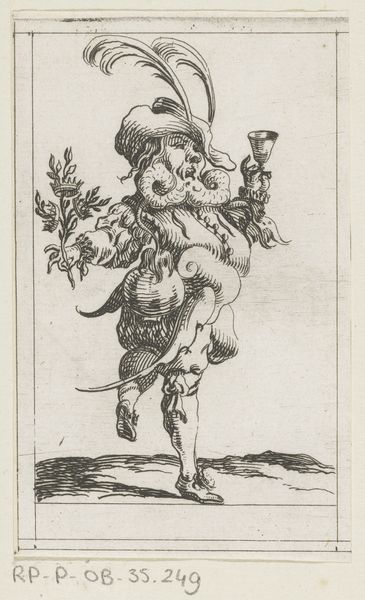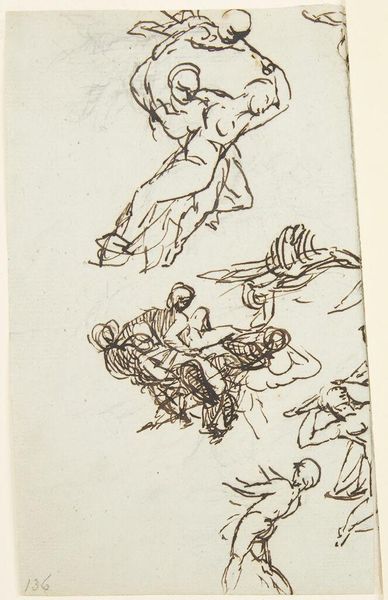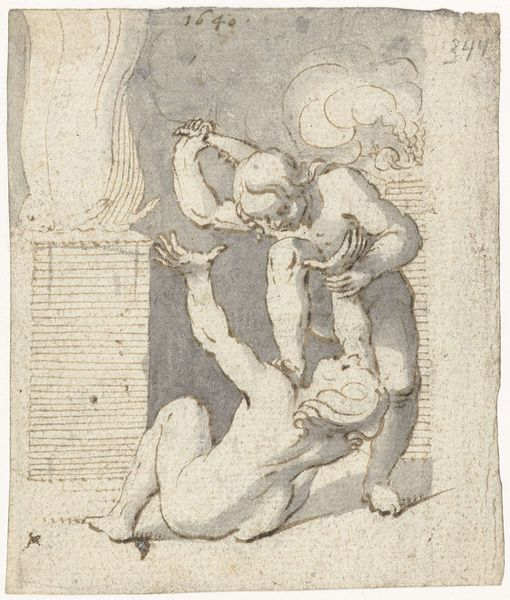
Scene of Martyrdom (Crucifixion of Saint Peter?) (recto); Fragment of Design for Ornamental Border (verso) 1600 - 1700
0:00
0:00
drawing, print, ink, pen
#
drawing
#
narrative-art
# print
#
pencil sketch
#
figuration
#
ink
#
coloured pencil
#
pen
#
crucifixion
#
watercolour illustration
#
history-painting
#
academic-art
Dimensions: 3-7/8 x 2-13/16 in. (9.8 x 7.2 cm)
Copyright: Public Domain
Editor: Here we have an anonymous drawing from the 17th century, titled "Scene of Martyrdom (Crucifixion of Saint Peter?)." It’s rendered in pen, ink, and perhaps colored pencil. It's a pretty stark depiction...what strikes you most about this piece? Curator: Immediately, I am drawn to the upside-down figure. The inverted cross in Peter’s martyrdom carries powerful symbolic weight. It speaks to humility, to a conscious mirroring of Christ, yet also a crucial divergence – an acknowledgement of not being equal to him. Editor: So, the way Peter is positioned isn't just a practical detail, but loaded with meaning. How does that meaning translate to a viewer of the time? Curator: In that era, when faith permeated daily existence, such imagery acted as a constant reminder of sacrifice and devotion. The artist captured a visual shorthand – Peter upside down, and the emotional memory attached would’ve resonated deeply. Consider the very ground depicted: a scattering of marks which form an obscure plane in the background. Does this visual plane remind the viewer of other shared symbols and narratives? Editor: That's fascinating, how much weight a seemingly simple inversion can carry. It's more than just a historical account; it’s a meditation on faith and humility, right? Curator: Precisely. And perhaps also, a quiet rebellion. An assertion of unique identity within a sacred narrative. We recognize Peter by association, yes? So the inversion marks the divergence between emulation and mere imitation. Editor: I see that now, thanks! I’ll definitely consider symbolism in artworks more deeply moving forward. Curator: And that is the reward that close looking offers: fresh questions, informed by our ongoing engagement with our collective cultural memory.
Comments
No comments
Be the first to comment and join the conversation on the ultimate creative platform.
